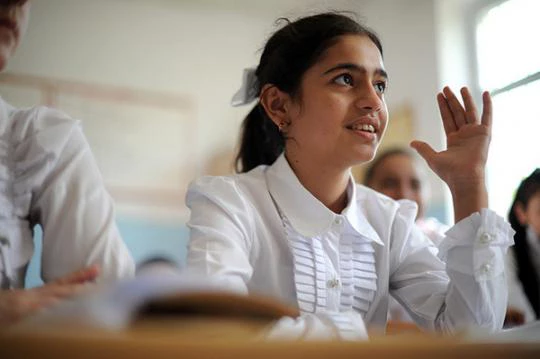Since the early 1960s (at the conference of Addis Ababa), and with the best intentions, the international community has been setting goals to solve educational problems in developing countries. Unfortunately, and for various reasons, these have not been met. Even the most recently agreed targets in the Millennium Development Goals, which should be achieved next year, will not be met. In fact, 54 countries will not have achieved universal primary education by the end of 2015.
As is well known, the coverage problems coexist with serious quality deficits. To put it bluntly, school coverage increases but learning does not. The magnitude of the challenges, and the difficulties to achieve the targets set in the past, should lead us to be rigorous and cautious when setting new goals.
Under the leadership of the UN there is an ongoing process to define new global development goals, including on education. In May 2013, a high level panel convened by the UN Secretary General Ban Ki-moon, and co-chaired by Prime Minister David Cameron of the United Kingdom and Presidents Susilo Bambang Yudhoyono of Indonesia and Ellen Johnson Sirleaf of Liberia, issued a report on the subject. Goal 3 of their 12 goals was ‘provide quality education and lifelong learning’ and suggested four potential targets, related to pre-primary, primary and secondary education, and the acquisition of work-related skills among young and adult workers.
While the proposal lacked in specificity, particularly in terms of the nature of the learning outcomes to be pursued, it provided a good starting point for a more detailed and specific proposal. By focusing on three key moments in the educational lifecycle of children and youth, and explicitly defining the targets in terms of the achievement of learning outcomes, it served as an invitation to debate more technical issues such as whether there ought to be internationally comparable learning standards.
Since then, however, things have gone downhill. In February of this year, UNESCO issued its position on education goals. The four targets proposed by the High Level Task Force became 10. This inflation was accompanied by a not-so-subtle attempt at mixing outcomes (learning) --around which there ought to be little controversy-- with commitments to spend more and hire more teachers –factors that not always lead to better outcomes. While the original task force left open the question of how to define learning standards, the UNESCO proposal seems to close the door to the idea of internationally comparable standards altogether, de facto eliminating the possibility to benchmark countries’ performance against each other.
And in July of this year, the Open Working Group of the UN issued its own set of recommendations. The 12 goals of the original task force have become 17 and the four education targets have become 10. The laundry list approach to target setting appears to become even more extreme in the latest document.
We think it is necessary to look at this in a critical and constructive way. While understanding the temptation to use the opportunity of new global targets to be ambitious and cover a wide range of issues and levels of education, we see three potentially serious problems with having 10 goals.
- First, knowing how difficult it is to achieve even a few goals, we believe that setting so many implies acknowledging that, in fact, these are just statements that will hardly be met. Proposing universal access to child-care, pre-school, primary, secondary and higher education by 2030 are lofty objectives –but anyone with a reasonable degree of pragmatism knows that this is a set-up for failure. Second, we are very concerned that having so many goals may dilute each one of them. It is well known that when everything is equally important, nothing is a fundamental priority.
- Third, there are serious methodological implications with the definition and measurement of several of the proposed targets. For example, the challenges of developing a consensus on how to measure skills needed to promote ‘global citizenship and appreciation of cultural diversity’ are simply overwhelming.
This is where goals, indicators and targets become important. They are devices we use to force ourselves to be disciplined, focused, and accountable. The primary role of learning goals is to set clear expectations for governments, schools and students. It is to set a moral benchmark to guide action. Or to use more technocratic language, we need them as the basis for management by results.
Such benchmarks need to be few, concrete and understandable by a large number of people. They must provide the basis for a mass communication campaign that rallies the engagement and support of teachers, parents, students, and society at large. They must be measured with validity and reliability so that they will be credible to ensure the trust of citizens. They must represent meaningful outcomes –such as children being able to read and write fluently—that appeal to our deepest sense of what is right and honorable.
-------
Ariel Fiszbein is the Education Program Director at the Inter-American Dialogue. Eduardo Velez Bustillo is an Adjunct Professor at Georgetown University and an international expert on education policy.
Follow the World Bank Group Education Team on Twitter @WBG_Education




Join the Conversation